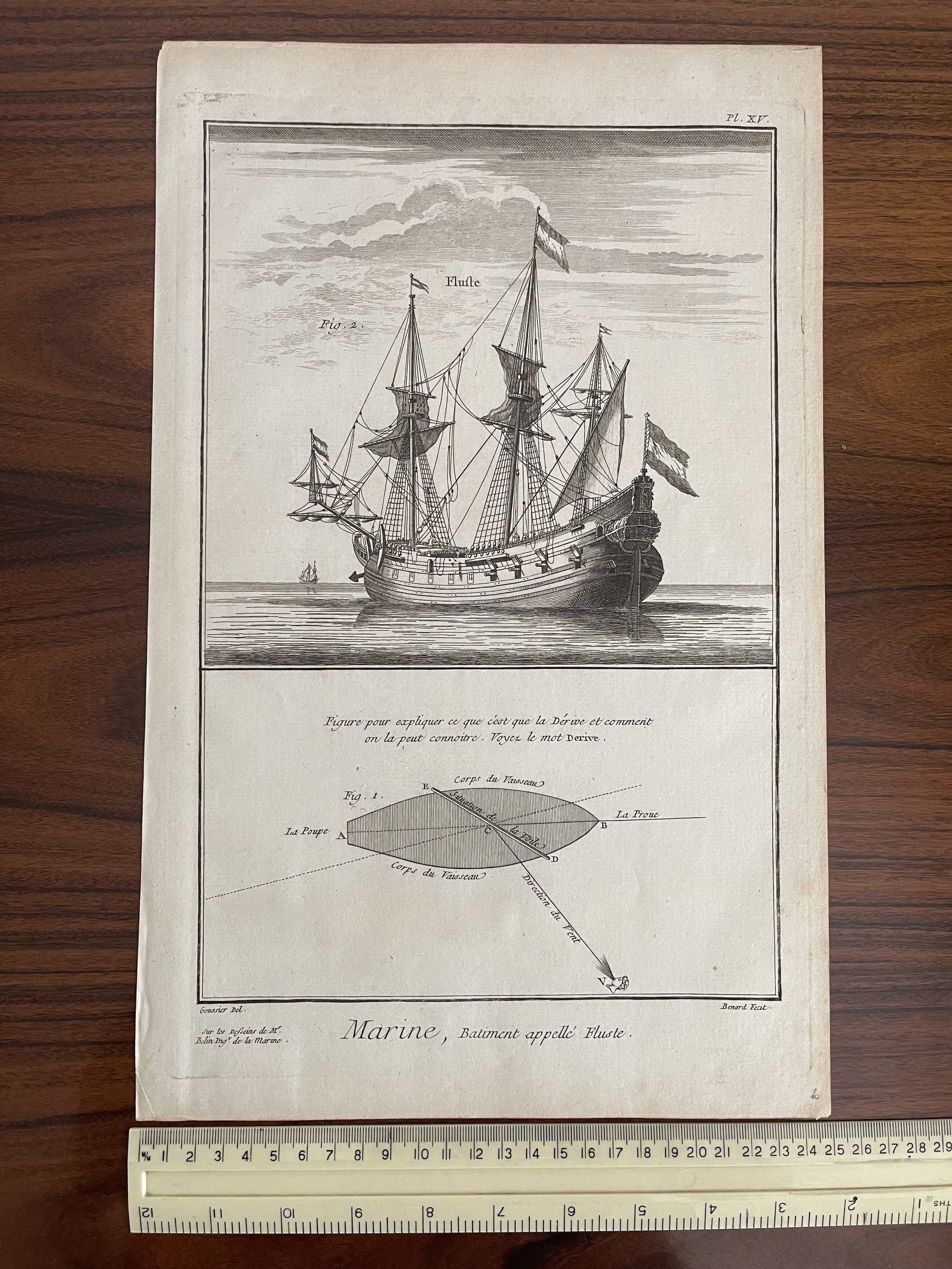 Image 1 of 8
Image 1 of 8

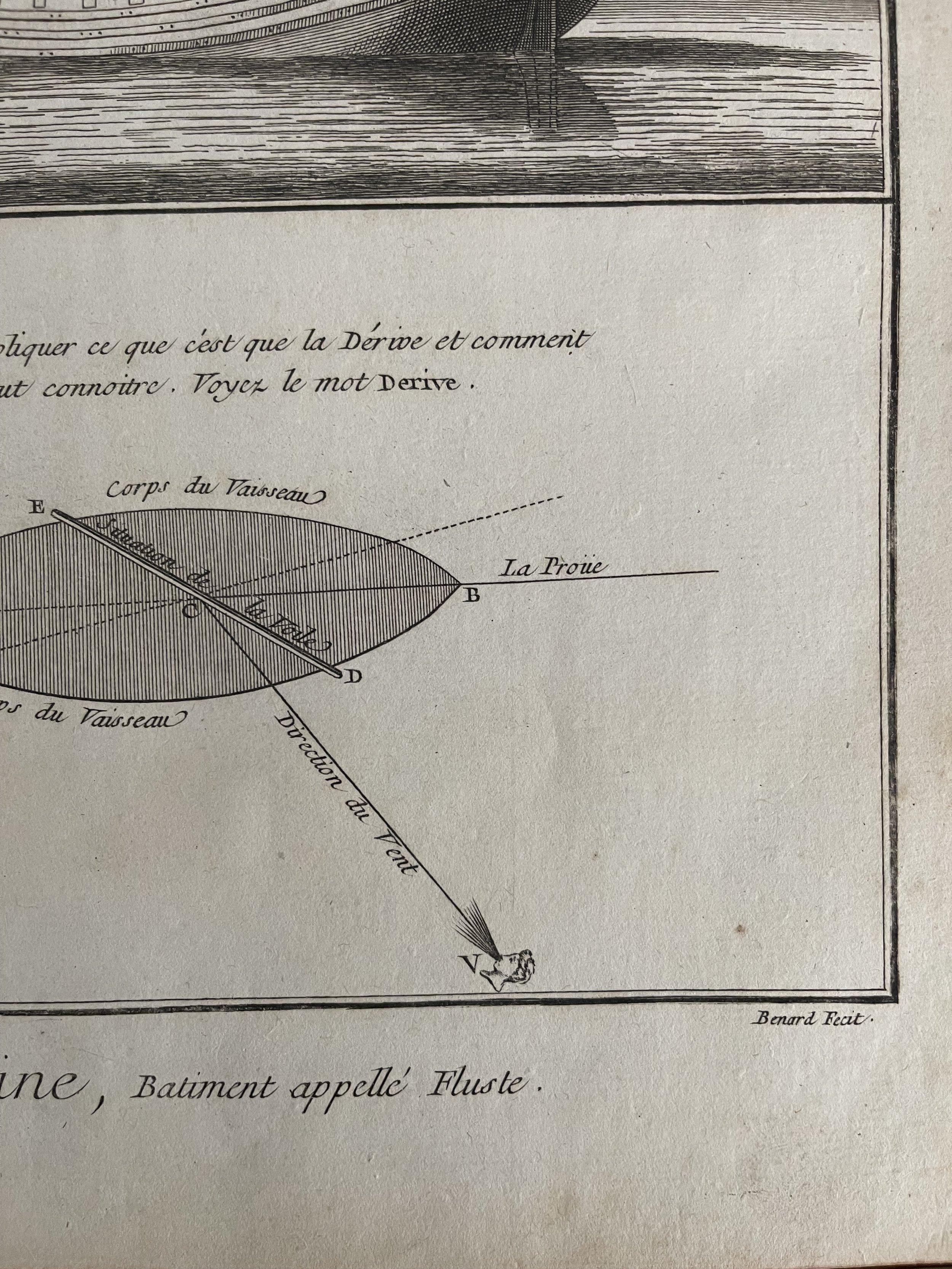 Image 2 of 8
Image 2 of 8

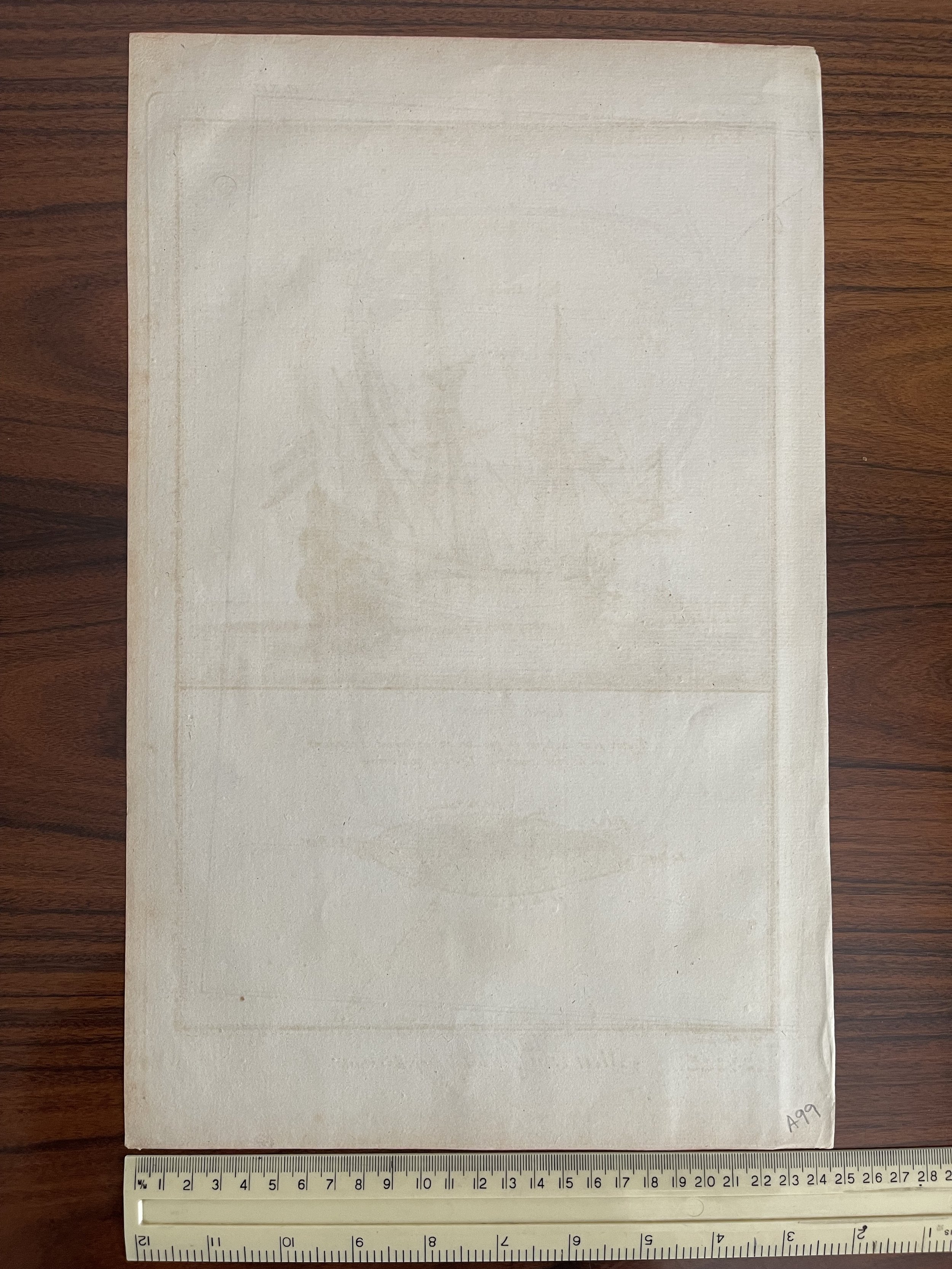 Image 3 of 8
Image 3 of 8

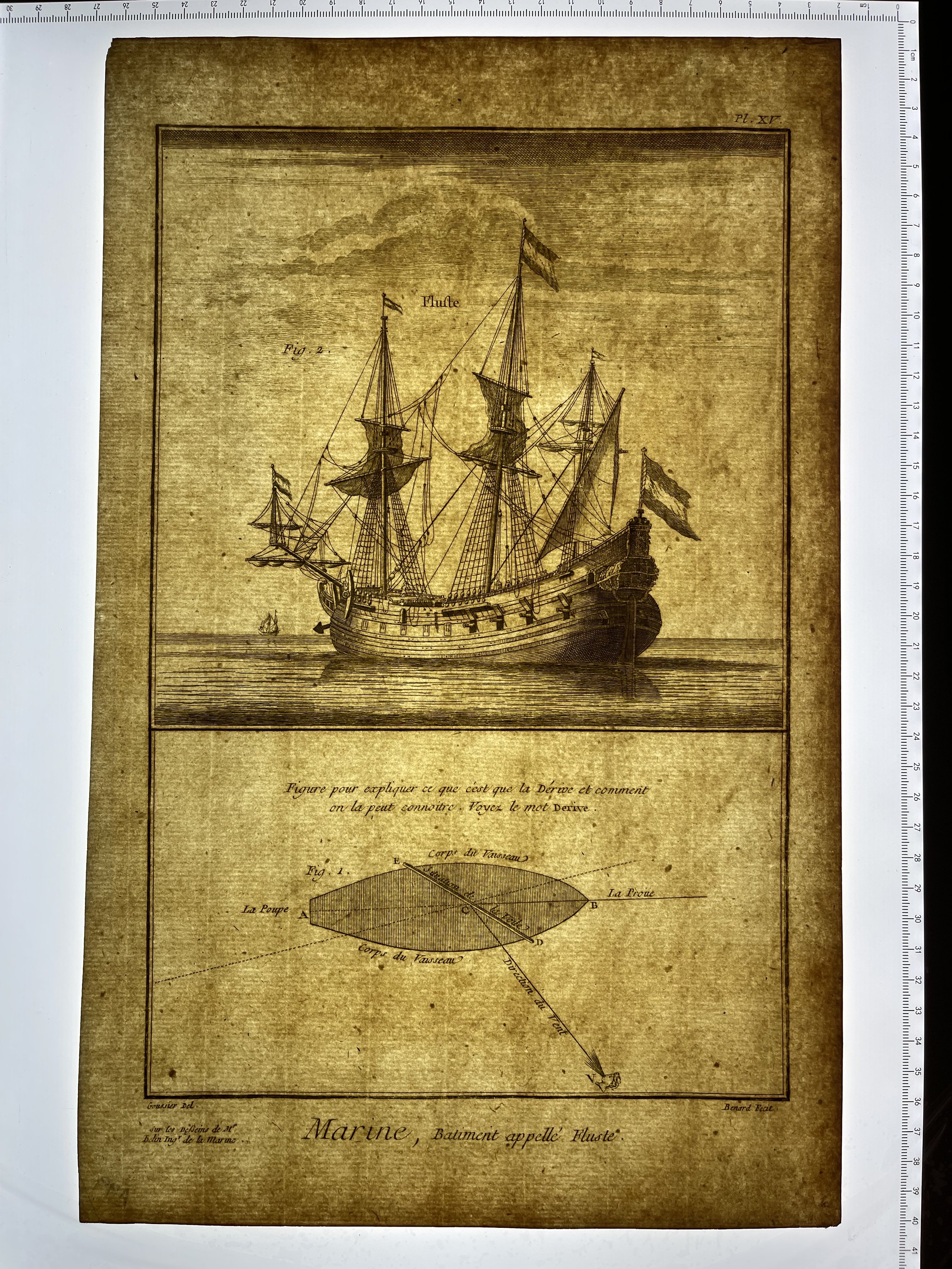 Image 4 of 8
Image 4 of 8

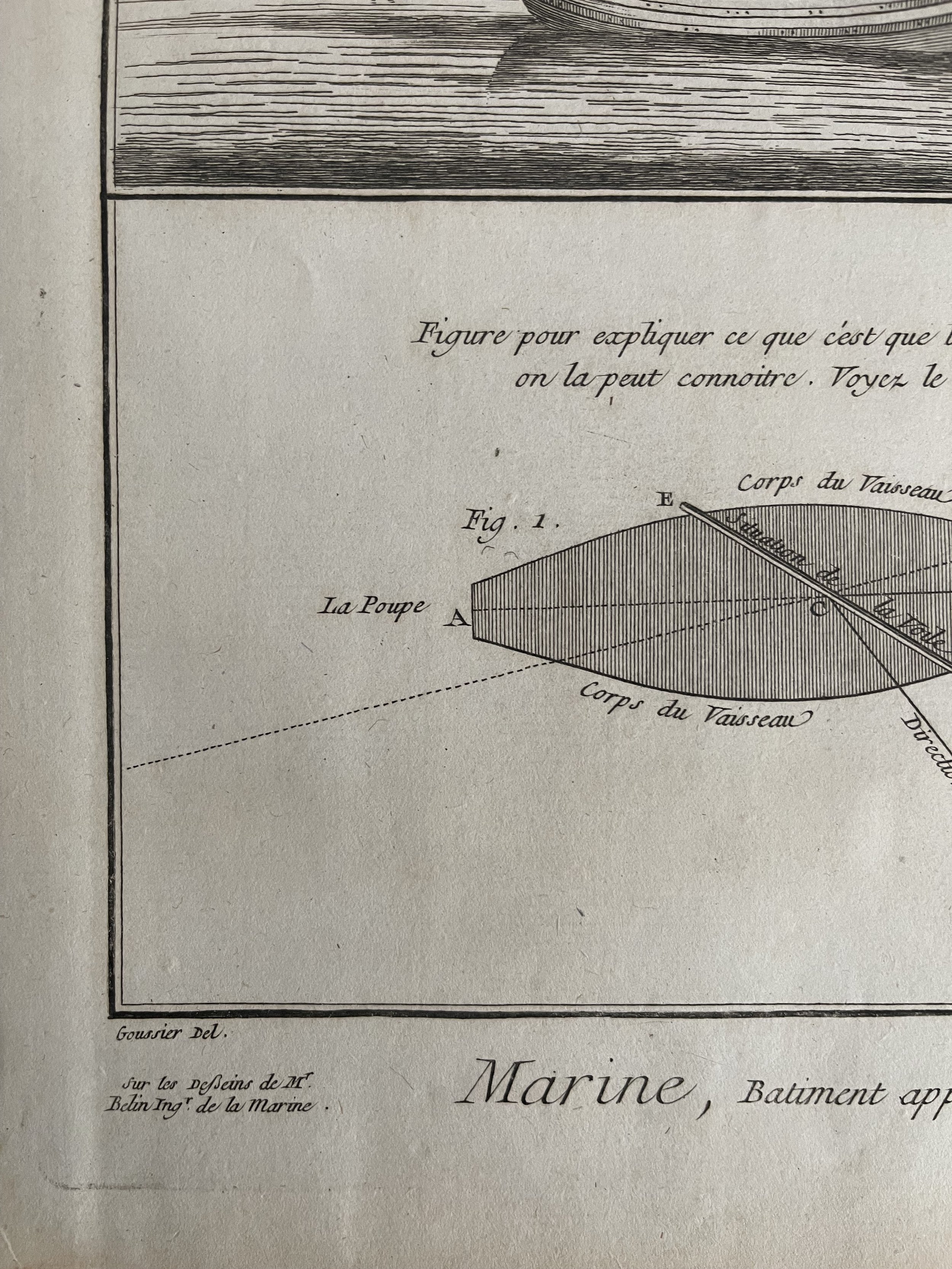 Image 5 of 8
Image 5 of 8

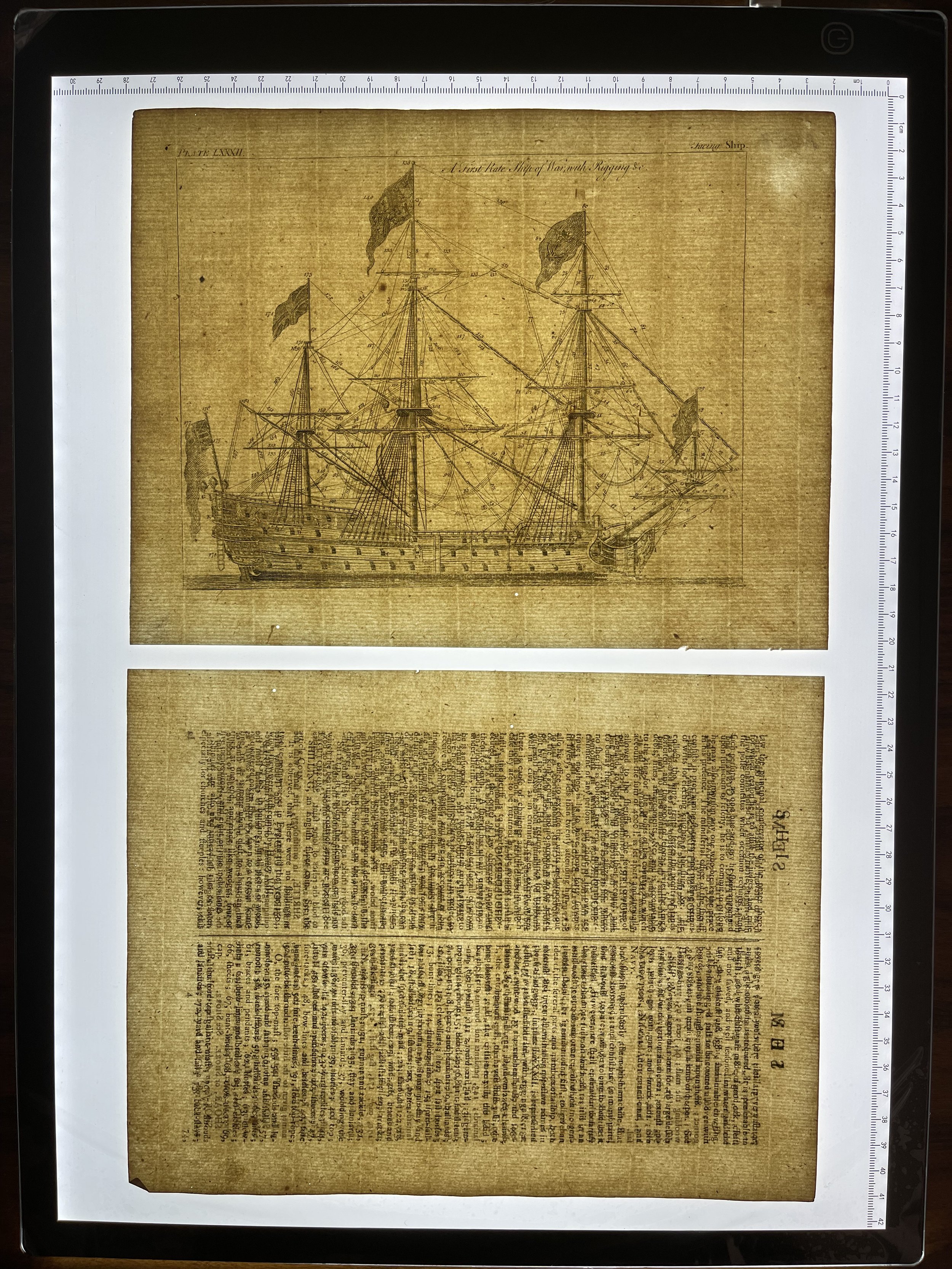 Image 6 of 8
Image 6 of 8

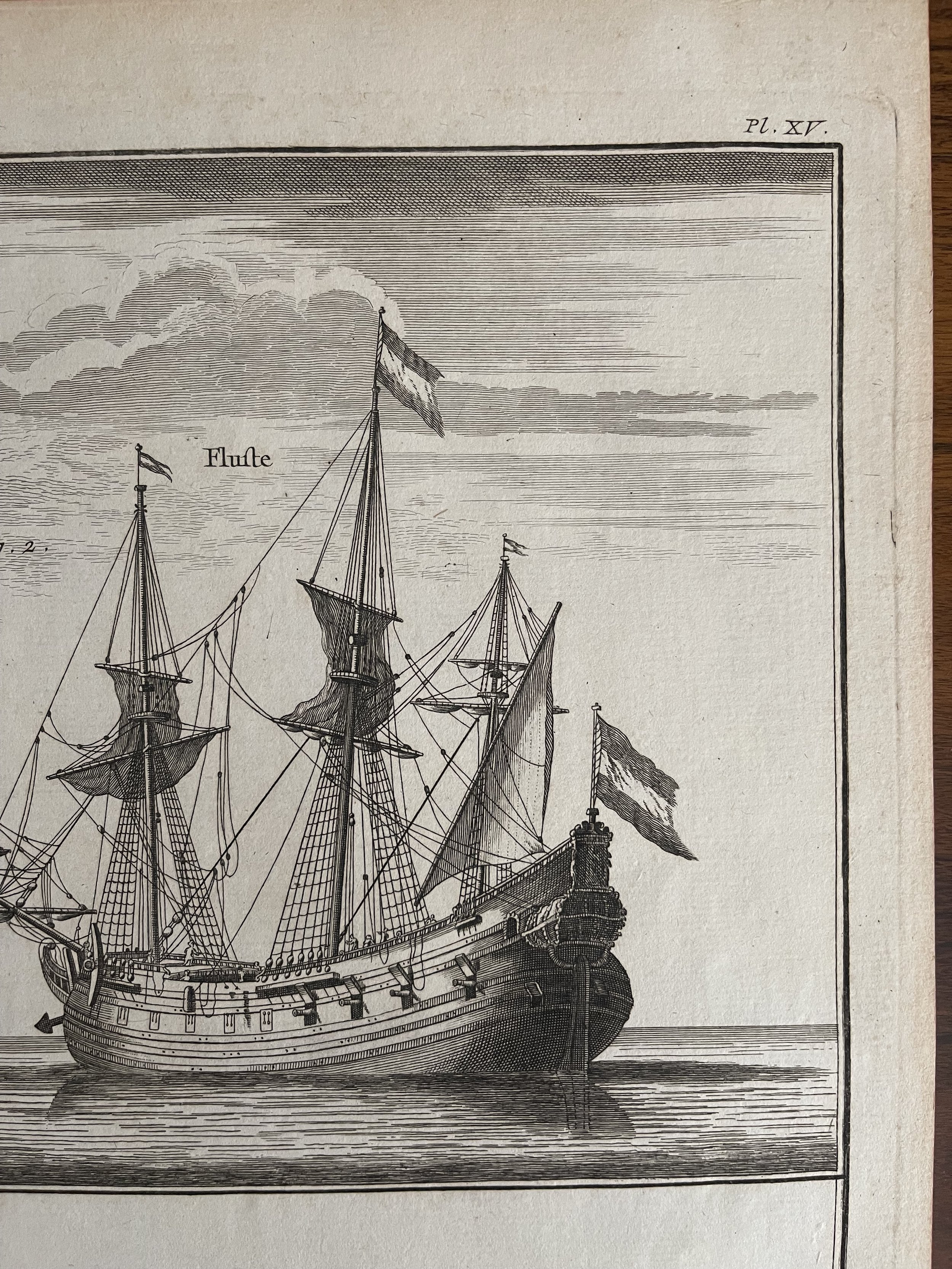 Image 7 of 8
Image 7 of 8

 Image 8 of 8
Image 8 of 8









'Marine, batiment appelé Fluste'. Denis Diderot / Jaques Renaud Benard - 1769
'Marine, batiment appelé Fluste'. Old print depicting a type of sailing ship. This print originates from 'Marine', an excerpt from 'Encyclopedie, ou Dictionnaire Raisonne des Sciences, des Arts et des Metiers'.
A Fluyt Dutch Cargo Vessel 1770-78 Copper Plate Engraving
The most conspicuous visible feature of the Fleute was its unconventional design with a bulbous hold with a round stern and a narrow deck due to the strongly inward curved ribs: a shape which was achieved exclusively by adapting the merchant ship to Danish customs regulations. The Danes calculated the customs duty for the important passage of the trade route into the Baltic Sea according to the size of the deck area.
A Fluyt or Fleute, Fluite, Fluit, Fliete, called Vliete was a Dutch ship from the 16th century. This pure merchant ship, which was built strictly according to economic aspects, renounced almost all elements and components used for representation or military purposes in favour of favourable manufacturing costs. But it was the second type of ship next to the cog that spread in the Mediterranean area. She had only little or no decorated superstructures at bow and stern. In contrast to the carousels and galleons usual at that time, a continuous middle deck was dispensed with in favour of the loading capacity. Thus the Fleute was at that time one of the few ship types which could not be converted to a military or buccaneer ship due to the lack of a usable cannon deck.
Denis Diderot (5 October 1713 – 31 July 1784) - Was a French enlightenment era philosopher, publisher and writer. Diderot was born in the city of langres, France and educated at the lycée louis le grand where, in 1732, he earned a Master of Arts degree in philosophy. Diderot briefly considered careers in the clergy and in law, but in the end chose the more fiscally challenge course of a writer. Though well respected in philosophical circles Diderot was unable to obtain any of the government commissions that commonly supported his set and consequently spent much of his life in deep poverty. He is best known for his role in editing and producing the encyclopédie which was one of the most revolutionary and impressive works of its time.
Initially commissioned as a translation of Ephraim chambers' cyclopaedia, or Universal Dictionary of Arts and Sciences, Diderot instead turned into a much larger and entirely new work of monumental depth and scope. Diderot’s encyclopédie was intended to lay bare before the common man the intellectual mysteries of science, art and philosophy. this revolutionary mission was strongly opposed by the powers of the time who considered a learned middle class it a threat to their authority.
During the encyclopédie production Diderot was imprisoned twice and the work itself was officially banned. nonetheless, publication continued in response to a demand exceeding 4000 subscribers. The encyclopédie was finally published in 1772 in 27 volumes. following the publication of the encyclopédie Diderot grew in fame but not in wealth. when the time came to dower his only surviving daughter, Angelique, Diderot could find no recourse save to sell his treasured library. in a move of largess, Catherine the II Russia sent an emissary to purchase the entire library on the condition that Diderot retain it in his possession and act as her "librarian" until she required it. When Diderot died of gastro-intestinal problems 1784, his heirs promptly sent his vast library to Catherine II, who had it deposited at the Russian National Library, where it resides to this day.
'Marine, batiment appelé Fluste'. Old print depicting a type of sailing ship. This print originates from 'Marine', an excerpt from 'Encyclopedie, ou Dictionnaire Raisonne des Sciences, des Arts et des Metiers'.
A Fluyt Dutch Cargo Vessel 1770-78 Copper Plate Engraving
The most conspicuous visible feature of the Fleute was its unconventional design with a bulbous hold with a round stern and a narrow deck due to the strongly inward curved ribs: a shape which was achieved exclusively by adapting the merchant ship to Danish customs regulations. The Danes calculated the customs duty for the important passage of the trade route into the Baltic Sea according to the size of the deck area.
A Fluyt or Fleute, Fluite, Fluit, Fliete, called Vliete was a Dutch ship from the 16th century. This pure merchant ship, which was built strictly according to economic aspects, renounced almost all elements and components used for representation or military purposes in favour of favourable manufacturing costs. But it was the second type of ship next to the cog that spread in the Mediterranean area. She had only little or no decorated superstructures at bow and stern. In contrast to the carousels and galleons usual at that time, a continuous middle deck was dispensed with in favour of the loading capacity. Thus the Fleute was at that time one of the few ship types which could not be converted to a military or buccaneer ship due to the lack of a usable cannon deck.
Denis Diderot (5 October 1713 – 31 July 1784) - Was a French enlightenment era philosopher, publisher and writer. Diderot was born in the city of langres, France and educated at the lycée louis le grand where, in 1732, he earned a Master of Arts degree in philosophy. Diderot briefly considered careers in the clergy and in law, but in the end chose the more fiscally challenge course of a writer. Though well respected in philosophical circles Diderot was unable to obtain any of the government commissions that commonly supported his set and consequently spent much of his life in deep poverty. He is best known for his role in editing and producing the encyclopédie which was one of the most revolutionary and impressive works of its time.
Initially commissioned as a translation of Ephraim chambers' cyclopaedia, or Universal Dictionary of Arts and Sciences, Diderot instead turned into a much larger and entirely new work of monumental depth and scope. Diderot’s encyclopédie was intended to lay bare before the common man the intellectual mysteries of science, art and philosophy. this revolutionary mission was strongly opposed by the powers of the time who considered a learned middle class it a threat to their authority.
During the encyclopédie production Diderot was imprisoned twice and the work itself was officially banned. nonetheless, publication continued in response to a demand exceeding 4000 subscribers. The encyclopédie was finally published in 1772 in 27 volumes. following the publication of the encyclopédie Diderot grew in fame but not in wealth. when the time came to dower his only surviving daughter, Angelique, Diderot could find no recourse save to sell his treasured library. in a move of largess, Catherine the II Russia sent an emissary to purchase the entire library on the condition that Diderot retain it in his possession and act as her "librarian" until she required it. When Diderot died of gastro-intestinal problems 1784, his heirs promptly sent his vast library to Catherine II, who had it deposited at the Russian National Library, where it resides to this day.
Code : A99
Cartographer : Cartographer / Engraver / Publisher: Denis Diderot / Jaques Renaud Benard
Date : Publication Place / Date - London 1769 approx
Size : Sheet size: Image Size: 21 x 32 cm
Availability : Available
Type - Genuine - Antique
Grading A-
Where Applicable - Folds as issued. Light box photo shows the folio leaf centre margin hinge ‘glue’, this is not visible otherwise.
Tracked postage, in casement. Please contact me for postal quotation outside of the UK.